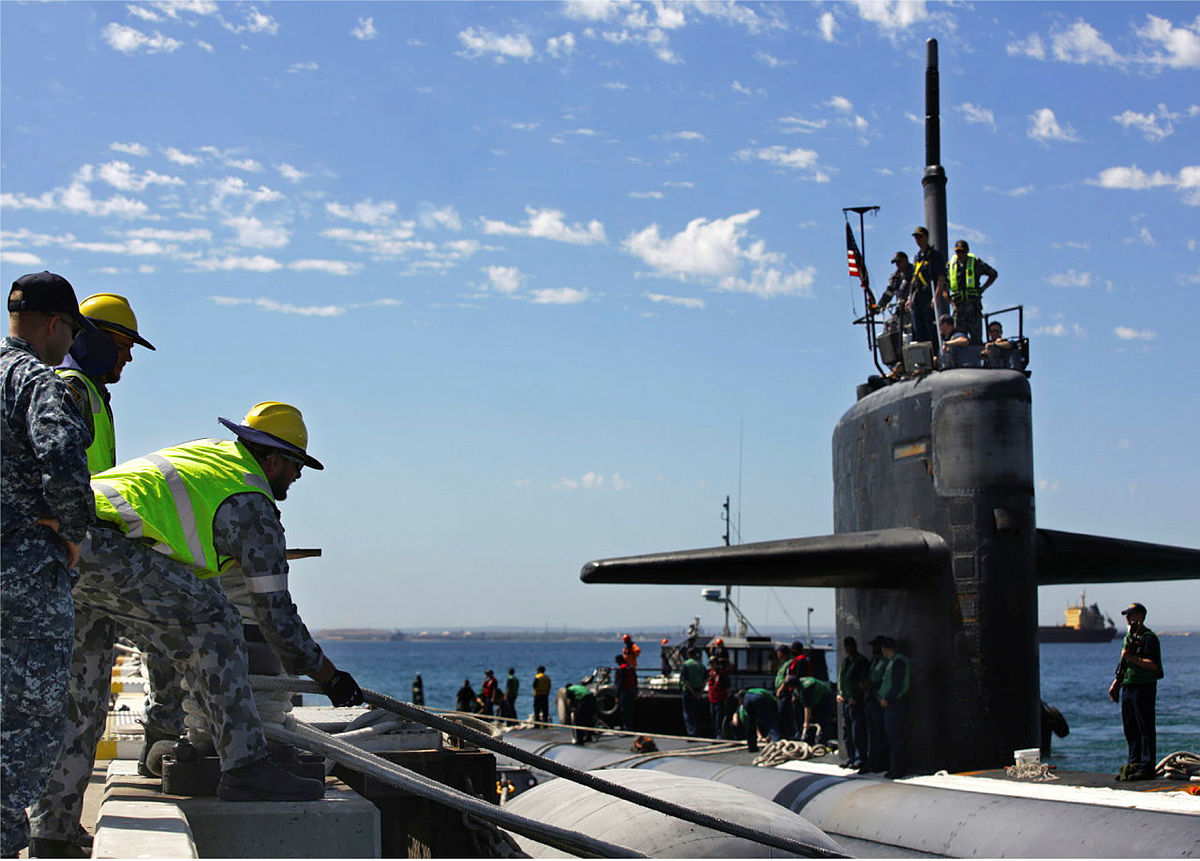
In my last post, I explained the need for
dual lines of responsibility for nuclear safety, with civilian authorities answerable to a minister other than the minister for defence to provide a degree of independence in discharging the government’s nuclear safety obligations. The Royal Australian Navy and Department of Defence are answerable to the defence minister.
The submarine’s crew is the obvious starting point. A British Astute-class nuclear-powered attack submarine (SSN) crew of 98 is almost double that of Australia’s Collins-class conventional submarines. We will need to train about 30 relief crew members to ensure we can sustain each submarine with a complement of at least 130 nuclear-qualified personnel. New skills are required for the nuclear technicians operating the reactor and for steam plant operators.
The mix of skills is very different. The SSN has two command qualified officers and five marine engineering officer and the Collins has one of each. Both are scarce categories in the Royal Australian Navy and in Britain’s Royal Navy. All will require nuclear training and sea experience and will need to join some time before their submarine is commissioned. A group of 35 engineers will have to join three years before commissioning.
The RAN submarine squadron based at HMAS Stirling provides the first line of technical support, maintenance assistance and oversight for the submarine. Accordingly, the squadron is a key component in the nuclear safety chain, providing oversight of the onboard qualification process at every step in individual and team training.
The squadron conducts many of the assessment boards, has oversight of training standards and conducts the operational readiness assessments of each crew prior to certifying the submarine as ready for operational deployment. Using the RN’s practice as a guide, the number of personnel in the RAN squadron will have to increase from 109 to over 200. Of that 100 additional personnel, about 50 will be required at the start of phase 1 of the transition, two years before the submarine is commissioned and when the reactor is first activated with its ‘initial criticality and power range testing’.
Monitoring and protecting the health of the nuclear power plant operators and ensuring that the public faces no risk of exposure to harmful ionising radiation are responsibilities of those owning a nuclear power plant. The RAN radiological protection and incident response team will undertake the routine radiation monitoring function, maintaining records of the radiation dose received by watch keepers and workers to ensure that no individual is put at risk.
The team must have the expertise to respond to any nuclear incident, monitoring radiation levels and hazards to the public. While it’s to be hoped this expertise will never be applied in earnest, it requires skills that must be both maintained and exercised and the capability to be publicly demonstrated. Three teams of 12 personnel (a total of 36) will be required to ensure that a team is available around the clock to respond to an incident at the SSN home port in HMAS Stirling and at the shipyard in Adelaide. The Stirling team would be set up to travel in support of port visits elsewhere. These teams must be in place, trained and certified prior to commissioning the reactor in the first SSN, 18 months before the submarine is commissioned.
The naval nuclear training and safety panel should be a Canberra-based RAN policy directorate, headed by a captain with experience as the submarine squadron chief engineer. The organisation’s role is to support the defence minister in discharging his or her responsibility to ensure that the standards of training and qualification of nuclear power plant operators are maintained. This entails oversight of the training delivered by the RAN and any other training provider. The organisation has access to all aspects of the training pipeline for scrutiny and assessment. A team of 20 is envisaged and 16 are required in phase 1.
The submarine capability branch, led by a rear admiral, should be responsible to the chief of navy for the safe and effective delivery of the agreed level of submarine capability, within allocated resources. Operating in a matrix management structure reaching across the Defence Department and the RAN, this officer should have authority over all Defence elements involved.
This organisation would oversee reactor safety, similar to the
US Navy’s operational reactor safeguards examination program, including orchestrating the unannounced drills and inspections required across the entire SSN program to ensure that this critical safety system is functioning correctly. An additional 110 personnel will be required and 50 will need to be in place during the policy development phase of the project, prior to phase 1.
The supplier navy’s submarine design authority will retain responsibility for nuclear safety within the design. A RAN liaison team will provide an interface with the design authority and a conduit to the RAN and its major maintenance facilities, with qualified personnel based in the supplier navy’s design authority and in Australia. The team will also be able to analyse any incidents and provide instructions to prevent repetition. That could involve changes in personnel skills, training, operating procedures, materials or design. A team of 25 uniformed and civilian professionals is envisaged.
Although the submarine should not require refuelling, it will require maintenance work on the reactor and its supporting systems. This work will be undertaken by two nuclear repair facility teams. If we were to follow UK procedures, team 1 would consist of 107 uniformed personnel sited at HMAS Stirling. Team 2, with 70 civilian and 57 uniformed personnel, would be situated at the shipyard in Adelaide. In the event of an incident, these personnel would assist the radiological response teams. Team 1 would need to have 25 of its personnel prior to phase 1.
In my next post, I’ll consider the training infrastructure and sum up the total number of personnel required to crew and safely oversee our first SSN.
 Print This Post
Print This Post